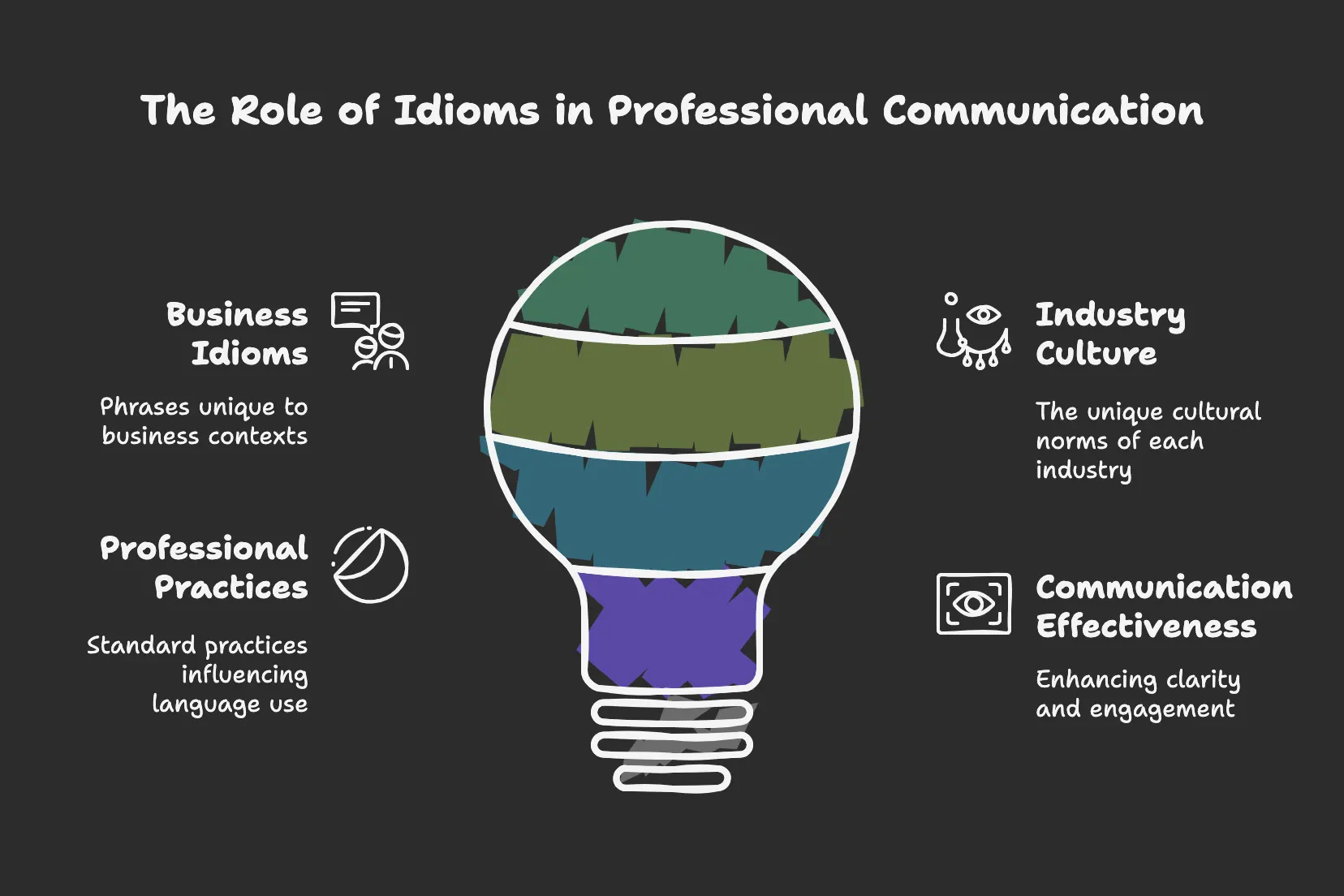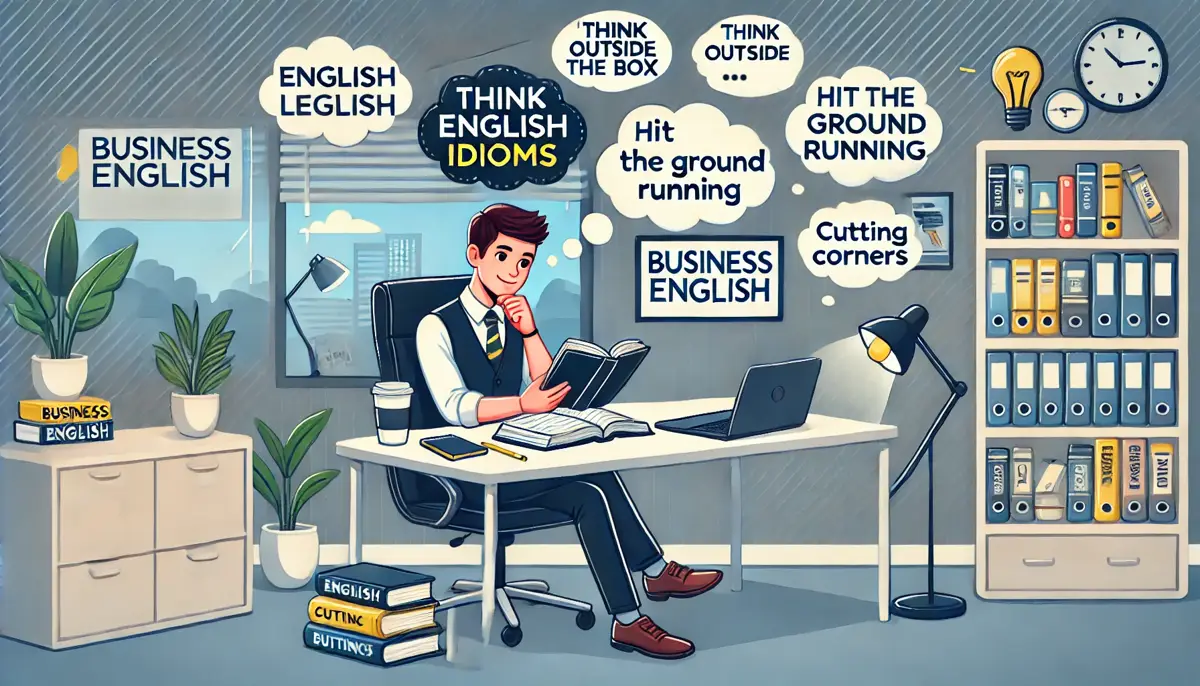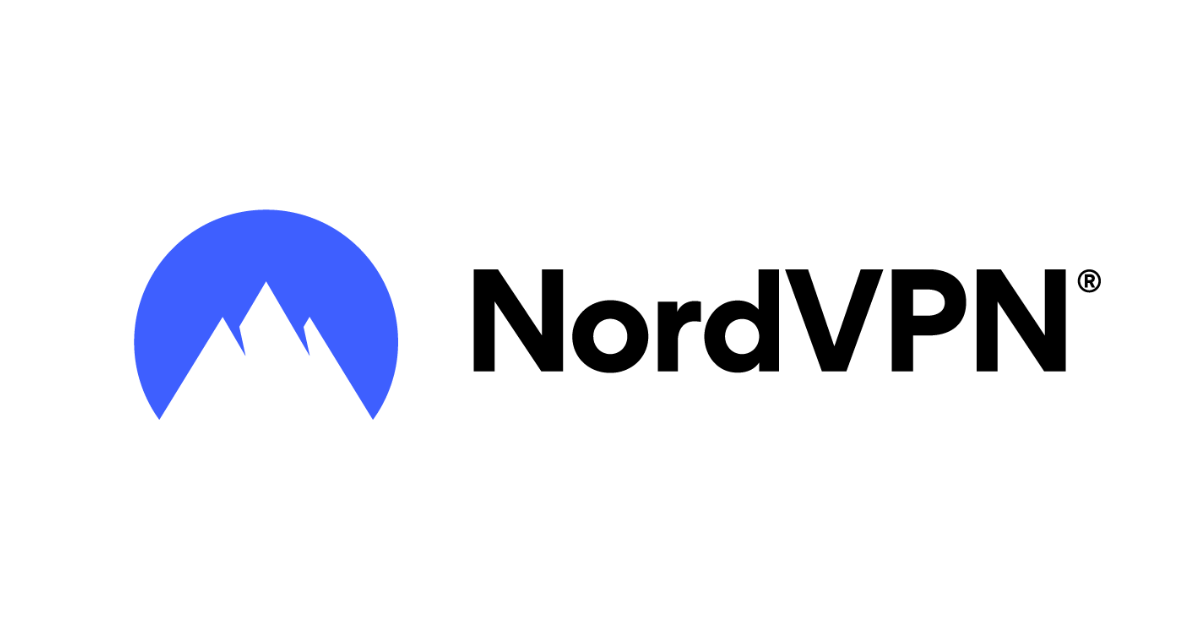In business, communication isn’t just about exchanging information—it’s about doing so efficiently, persuasively, and with impact. A well-placed phrase can turn a simple conversation into a moment of clarity, making complex ideas digestible and actionable. This is where idioms come in.
Take, for example, “Let’s get the ball rolling.” In just five words, this phrase communicates the need to take action, eliminating the need for a long-winded explanation. Idioms like this enhance workplace communication by making it more dynamic, relatable, and, most importantly, effective.
Beyond clarity, idioms help professionals build rapport. Mastering business idioms signals fluency, confidence, and an understanding of workplace culture—essential elements for collaboration in any organization. However, while these phrases can strengthen communication, they also come with challenges, particularly in multicultural settings. The key is knowing when and how to use them.
Why Idioms Are Relevant to Business Communication
Idioms are more than just catchy phrases—they are strategic tools that enhance workplace communication in three key ways:
1. Enhancing Clarity and Engagement
A well-chosen idiom can distill a complex idea into a single phrase. Instead of explaining the need for innovation, saying “think outside the box” instantly conveys the message. Rather than instructing a team to begin a project, “get the ball rolling” captures the same sentiment concisely. These expressions make communication not only more efficient but also more engaging.
2. Building Relationships and Cultural Fluency
The way we communicate shapes our relationships at work. Using idioms naturally in conversation demonstrates linguistic fluency and a deeper understanding of workplace culture, making interactions feel more authentic. When colleagues share common idioms, it fosters a sense of connection and belonging—crucial for teamwork and trust.
3. Navigating Cross-Cultural Communication
As business becomes increasingly global, professionals must navigate language barriers carefully. While idioms can bridge understanding, they can also create confusion if unfamiliar to non-native speakers. Expressions that are second nature in one culture may be puzzling in another. For instance, “cut to the chase” may be well-known in English-speaking business settings but could require explanation elsewhere. The key is using idioms thoughtfully, ensuring they enhance rather than hinder communication.
Mastering idioms can elevate business communication, making it clearer, more engaging, and culturally nuanced. However, just like any tool, they must be used strategically for maximum impact.
How Idioms Differ Across Industries
Industry-specific language plays a crucial role in workplace communication, shaping the way professionals convey ideas and navigate discussions. Business idioms often emerge from an industry’s unique culture, practices, and challenges, making them essential for effective communication within a given field. Understanding these variations allows professionals to sound more knowledgeable and engage more naturally in industry-specific conversations.

Finance
The financial world is filled with high-stakes decision-making, risk assessment, and number-crunching—reflected in the idioms used in this field. Some common finance-related expressions include:
- "In the red" – A company or individual is operating at a loss or in debt.
- "Crunch the numbers" – To analyse financial data or conduct detailed calculations.
- "A penny for your thoughts" – A way to ask for someone's opinion, often in investment or budget discussions.
Mastering these idioms can help professionals articulate financial matters with precision and confidence.
Marketing
Marketing thrives on creativity, strategy, and consumer engagement, which is reflected in its idioms. Many of these expressions capture the competitive and results-driven nature of the industry:
- "Corner the market" – To dominate a particular industry or product category.
- "Bang for the buck" – Getting the best value for money spent on advertising or promotional efforts.
- "Move the needle" – To create a significant impact or noticeable change in a campaign.
Understanding these idioms can enhance communication between marketers, clients, and stakeholders by making discussions more precise and engaging.
Tech
The fast-paced world of technology and innovation has its own set of idioms, many of which reflect the industry's focus on development, progress, and disruption:
- "Ramp up" – To increase production, effort, or resources rapidly.
- "Cutting-edge" – Describing the latest and most innovative technology.
- "Bite the bullet" – To take on a challenging or necessary task, such as adopting new tech or restructuring a project.
Using these expressions in tech settings can make professionals sound more in tune with the industry's dynamic nature.
Guidance for Non-Native English Speakers

For non-native English speakers, learning and correctly using idioms in business settings can be both challenging and rewarding. Here’s a step-by-step approach to mastering them:
1. Start with Common Idioms
Not all idioms are equally useful. Begin with widely recognized business idioms that are versatile and frequently used, such as:
- “On the same page” – To have a shared understanding.
- “Learn the ropes” – To become familiar with a job or process.
- “Call it a day” – To stop working for the day.
These are safe choices that can be applied across multiple business contexts.
2. Understand Context
Idioms often carry meanings that go beyond their literal definitions. Understanding when and where to use them is crucial. A phrase like “hit the ground running” (start quickly and effectively) works well in fast-paced work environments but may sound out of place in more relaxed settings.
To build familiarity, observe how native speakers use idioms in meetings, emails, and conversations. Business articles, workplace videos, and podcasts are excellent resources for learning idiomatic usage in real-world contexts.
3. Use Resources
Many online platforms offer structured ways to learn business idioms. Consider using:
- Blogs and articles – Business English-focused websites often compile lists of common idioms.
- Online courses – Platforms like Coursera, Udemy, and LinkedIn Learning offer courses tailored to business communication.
- Dictionaries and apps – Tools like the Cambridge Business English Dictionary and ELSA Speak can provide definitions, examples, and pronunciation guides.
4. Practice Gradually
Instead of using idioms immediately in formal settings, practice them in casual workplace conversations or informal chats with colleagues. For example, saying “Let’s sleep on it” when discussing a decision with a coworker is a low-risk way to incorporate idiomatic language.
5. Seek Feedback
The best way to refine idiom usage is by getting feedback from native speakers. Ask coworkers, mentors, or language partners to point out any misused expressions and suggest improvements. Over time, this will boost confidence and ensure that idioms are used naturally and appropriately.
By incorporating idioms strategically, non-native speakers can enhance their business communication skills, making interactions more fluid, engaging, and culturally attuned.
"The Bottom Line"
Mastering idioms in business communication isn’t just about sounding fluent—it’s about enhancing clarity, efficiency, and connection. By using idioms effectively, professionals can convey complex ideas succinctly, build rapport with colleagues, and demonstrate cultural fluency in the workplace.
For non-native speakers, the key is gradual learning and practice. Start with common idioms, pay attention to context, and integrate them naturally into conversations. Over time, this will lead to more confident and engaging communication.
So, why not get the ball rolling today? Explore new idioms, practice them in conversations, and refine your usage. The more you engage with business idioms, the more naturally they’ll become a part of your professional toolkit.
FAQ
1. Why should I use idioms in business communication?
Idioms help make communication more engaging, efficient, and relatable. They allow professionals to express complex ideas succinctly while also building rapport with colleagues and clients.
2. Are idioms appropriate for formal business settings?
Yes, but use them thoughtfully. In formal settings, stick to widely recognised idioms like "on the same page" or "think outside the box." Avoid overly casual or niche idioms that may confuse listeners.
3. How can I avoid misusing idioms in cross-cultural communication?
Be mindful of your audience. Some idioms may not translate well across cultures, so when communicating with international colleagues, choose idioms carefully or provide explanations when needed.
4. What are some simple idioms to start with?
Begin with commonly used business idioms like "get the ball rolling" (start a task), "learn the ropes" (understand how something works), and "call it a day" (stop working for the day).
5. How can I improve my understanding and use of business idioms?
Practice by reading business articles, watching workplace discussions, and using idiom dictionaries. Try incorporating idioms gradually in informal conversations and seek feedback from native speakers.




